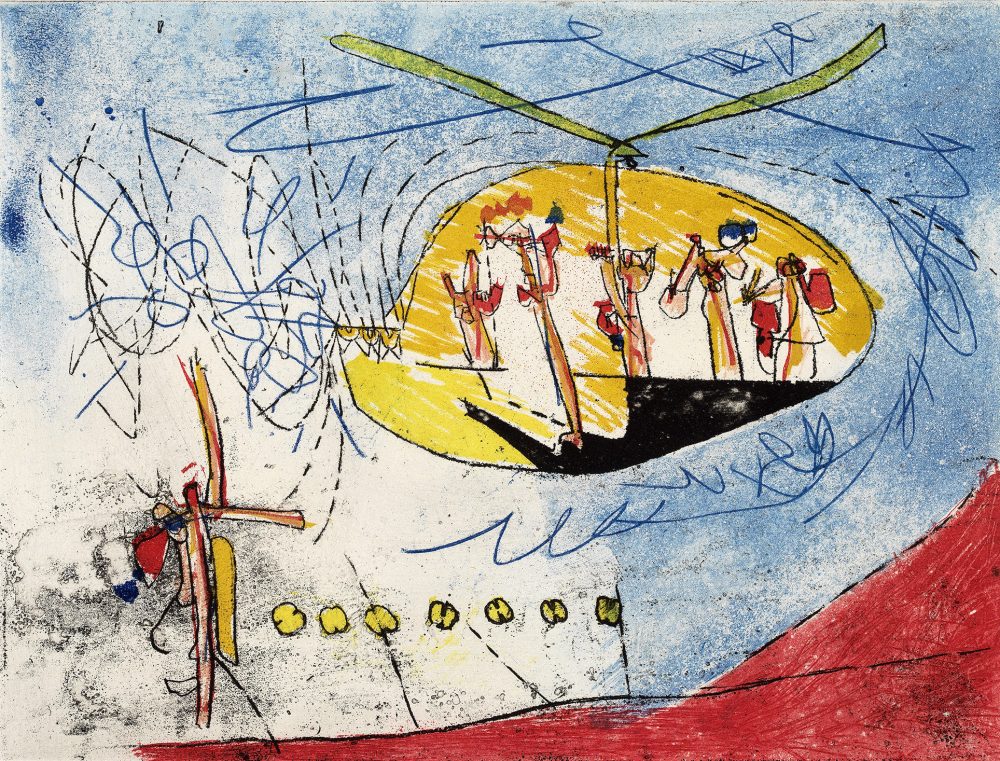Gerald Laing
Reclining Figure Relief Painting
Please provide us with a few details to progress to the viewing room
Thank you for your enquiry
We will be in touch shortly.
Gerald Laing
Reclining Figure Relief Painting
Viewing Room
Gerald Laing (1936—2011) is one of the most important British Pop artists of his generation and one of the few to cross both the UK and US Pop Art movements.
We are delighted to be offering the relief painting Reclining Figure (1974), which was created during a pivotal time when Laing began to move away from abstraction and explore figurative sculpture. This change in approach would occupy his interests for more than three decades and the period in which this work was made represents a turning point.
Laing first visited New York in 1963, after the end of his first year at St. Martin’s School of Art, London. It was here that he was introduced to artists including Andy Warhol, James Rosenquist, Roy Lichtenstein and Robert Indiana. When he moved to New York in 1964 he was immediately drawn into the wave of American Pop Art. However, he began looking for a new direction to with his work, feeling disillusioned by the New York art scene. By the late 1960s he moved to Kinkell Castle in the Scottish Highlands. At first, his new life in the rural Highlands influenced his work and imbued his abstract sculptures with the rugged and unfinished qualities of his surroundings.
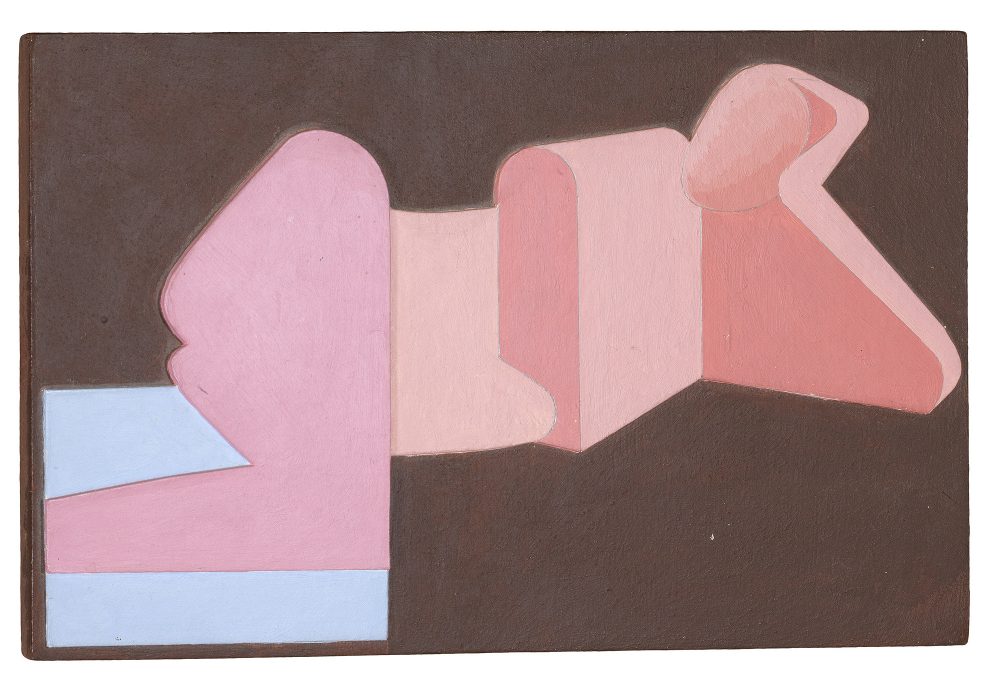
Constrained by the limitations of the disciple of abstraction, he began experimenting with working in clay, using his wife – Galina Golikova – as a model. These first figurative sculptures – influenced by Cubism and Modernism – still retained an element of abstraction rather than purely empirical observation. Laing continued to investigate the preoccupations with line, surface and paradoxes of volume that had previously informed and driven his abstract work. While he did not seek to resolve the tension between abstraction and figuration definitively, the power of his work came from the dialogue between a subjective and stylised approach that tended towards the abstract and an objective, naturalistic approach that came from observation. Laing saw these aspects as two complementary and necessary elements. Integrating these two approaches echoed his earlier use of areas of flat colour alongside the suggestion of volume (with his halftone dots in his Pop paintings).

A page of drawings of Galina, which inspired the series ‘Reclining Figures’ (1974).
The Reclining Figure series of reliefs and sculptures from 1974-5 clearly shows his continuing work with abstraction, but this time, takes the objective observation of the human figure as its starting point. The works in this series are inspired by a page of drawings of Galina. The shapes of the figure become progressively more geometric and architectural. The present work is the first of these relief paintings on wood and therefore the beginning of this process. It is the most naturalistic of the seven works in this series.

Bronze sculpture made prior to Reclining Figure Relief Painting, 1974 (Knight 309), which shows the new figurative direction he took during this period.
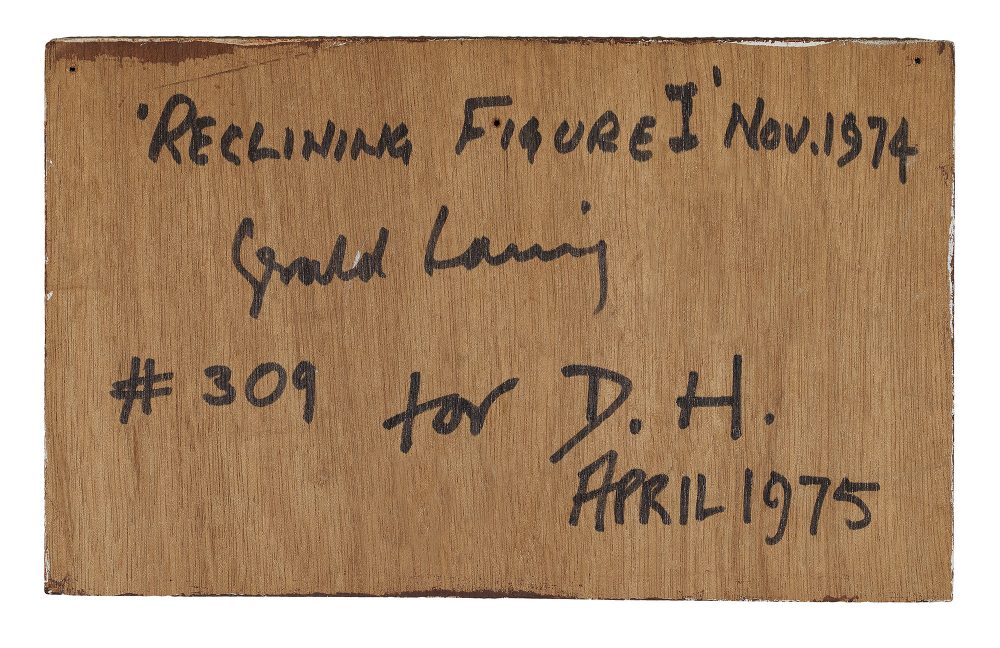
Provenance:
This verso of this work bears a dedication from the artist to Douglas Hall (1926 – 2019), the first Keeper of the Scottish National Gallery of Modern Art (in 1961—86). He established the Gallery’s international reputation and made a lasting impact on the arts in Scotland. His independent and sometimes idiosyncratic taste helped shape an ambitious and impressive collection, including works by Jean Dubuffet (before the Tate acquired a work by this artist), Pablo Picasso, Roy Lichtenstein, Ferdinand Hodler, Ernst Ludwig Kircher, Emil Nolde and Balthus. He was awarded an OBE for services to the Arts in 1985.
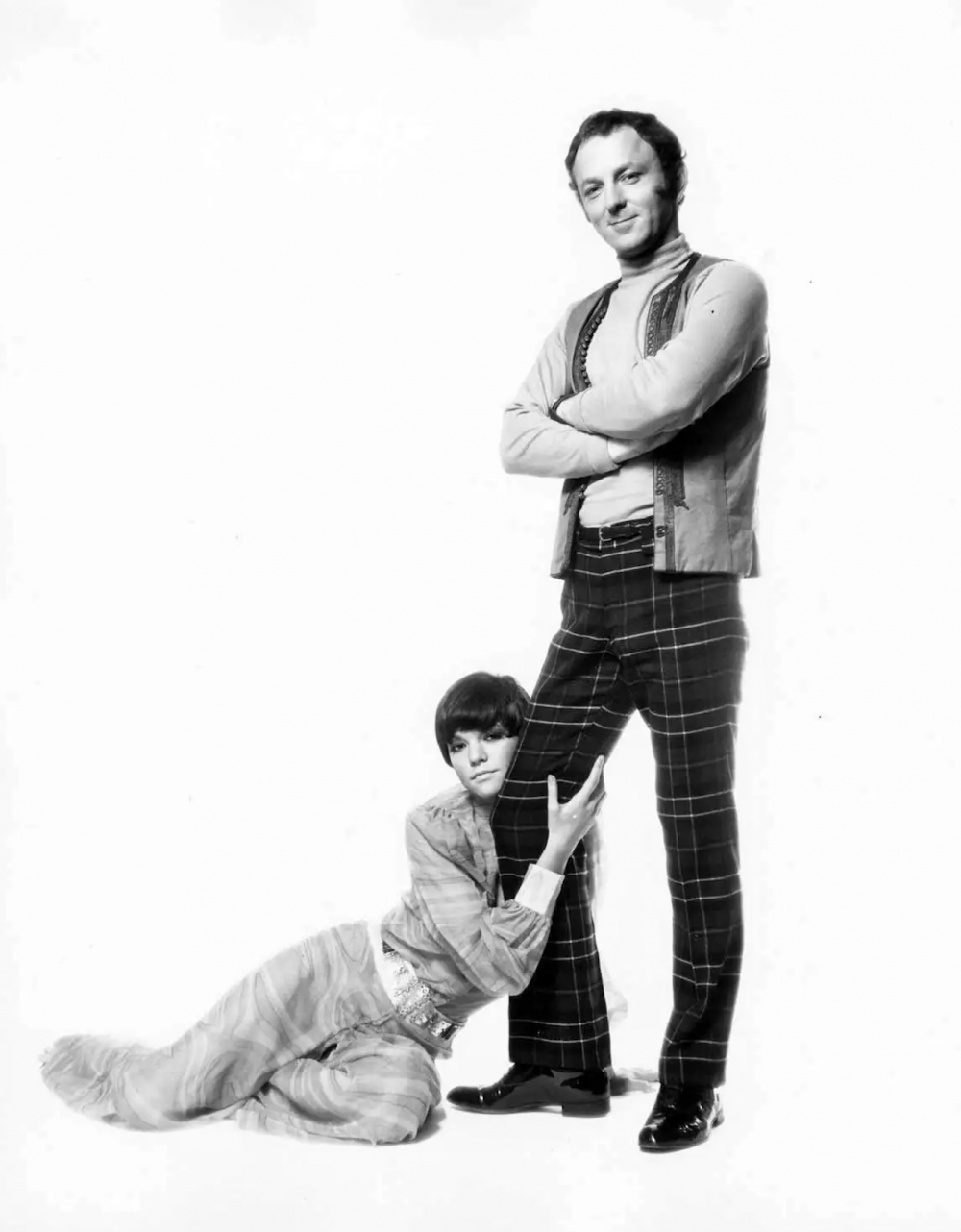
Biography |
Gerald Laing (1962 – 2011) was a prominent British Pop Artist, born in Newcastle-upon-Tyne and who studied at St Martin’s School of Art, London. Characteristic of Pop Artist, Laing was deeply inspired by images from popular culture, mass produced media and advertisements and like Andy Warhol, Laing began experimenting with screen-printing during the 1960s. In 1963, his iconic painting Brigitte Bardot (1963) was included in Young Contemporaries 63, an exhibition at the Royal Society of British Artists’ Galleries in London. From 1964 – 1969 he lived in New York where he exhibited and was further inspired by the Pop scene emerging and Laing printed many of these works on his own press which he built in his loft in the Bowery, New York.
His earlier works often capture the energy of the 1960s or famous models or movie stars such as Bridget Bardot. He often appropriated images from newspapers or magazines, simplifying them, adding black dots – as a parody of cheap printing methods – and articulated them with bold flat plains of saturated colour. Laing then turned to imagery of skydivers and astronauts as the subjects of his prints.
He later returned back to the Scottish Highlands where he continued to work and to depict contemporary celebrities including Amy Winehouse and husband Blake Fielder-Civil in his 2007 work titled The Kiss, since it reminded him of Rodin’s sculpture of the same title.
His works are held in many public and private collections worldwide including the Tate, the V&A, the National Portrait Gallery and the National Gallery in London and in the Museum of Modern Art and the Whitney Museum, New York.
Literature |
Knight, D., Gerald Laing: Catalogue Raisonné of Painting and Sculpture (Lund Humphries Publishers Ltd.: 2017)
To view Gerald Laings prints, please click here.
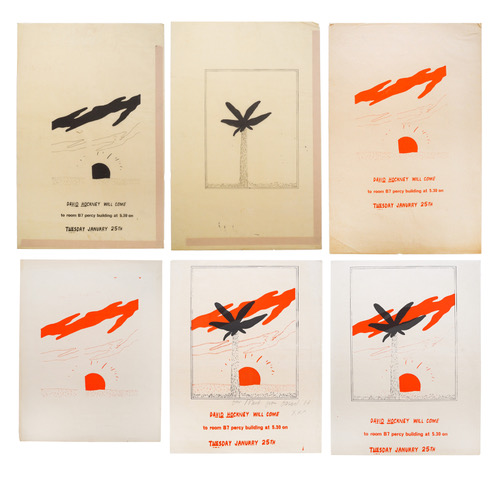
David Hockney
David Hockney Will Come
3rd - 24th October 2023
Online Exhibition
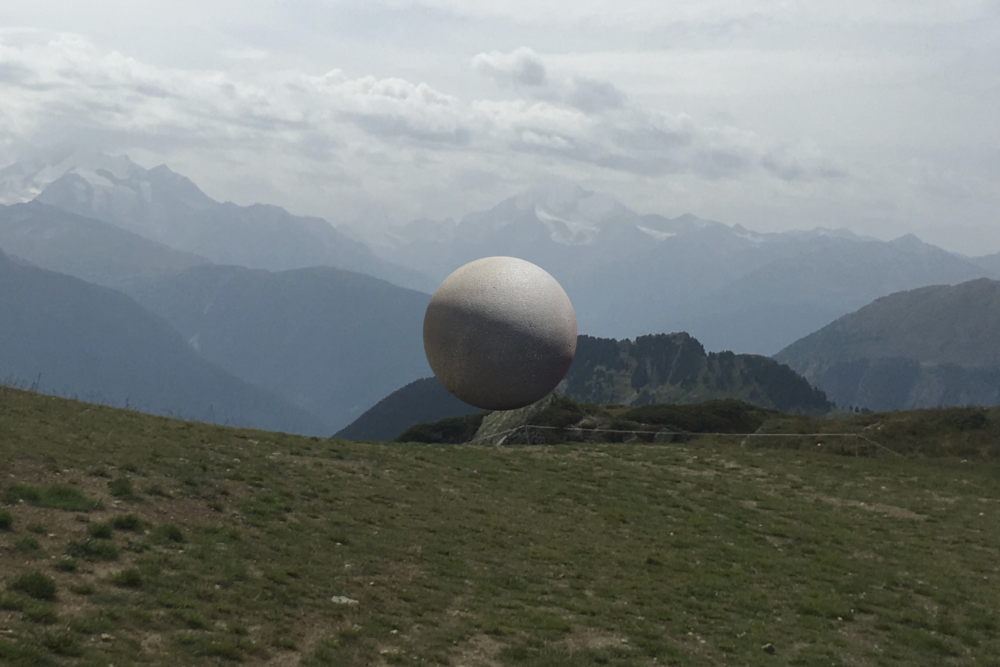
Ana Andreeva
IN CONTEXT
10.07.2023 - 10.08.2023



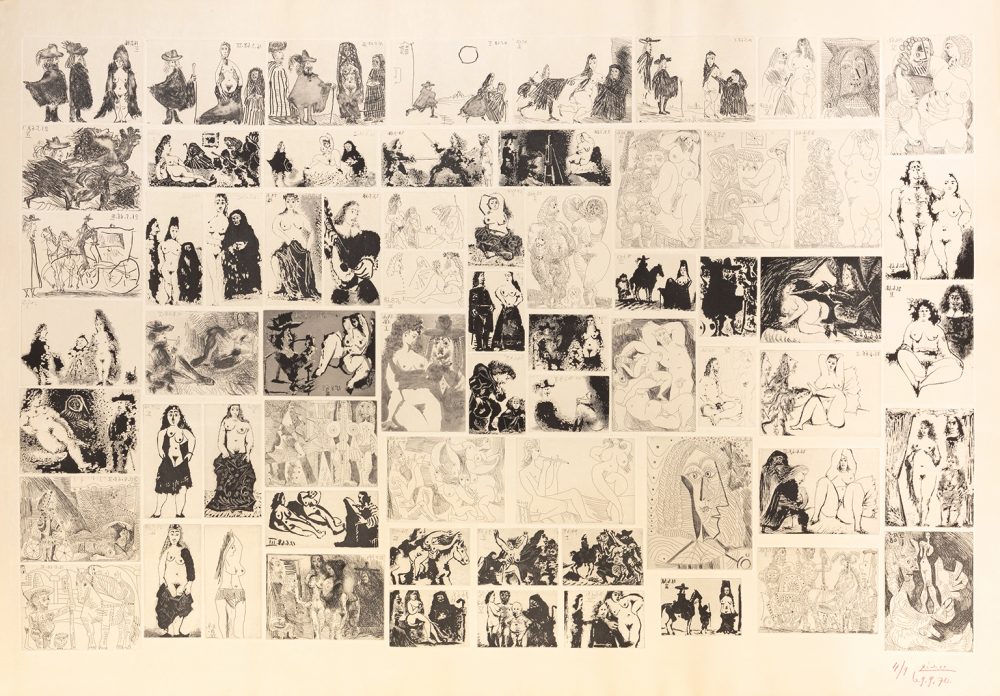
Pablo Picasso
La Célestine
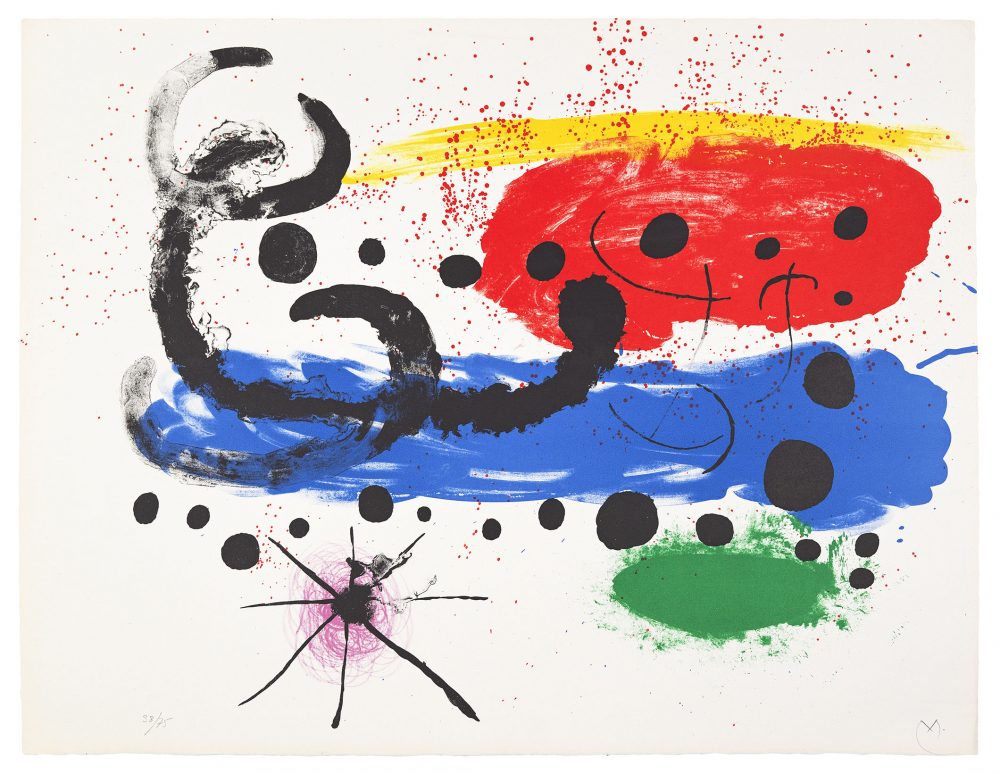
Joan Miró: Works from Album 19
8th March - 5th April 2022

Henry Moore
Sculptural Ideas
3rd February - 3rd March 2022
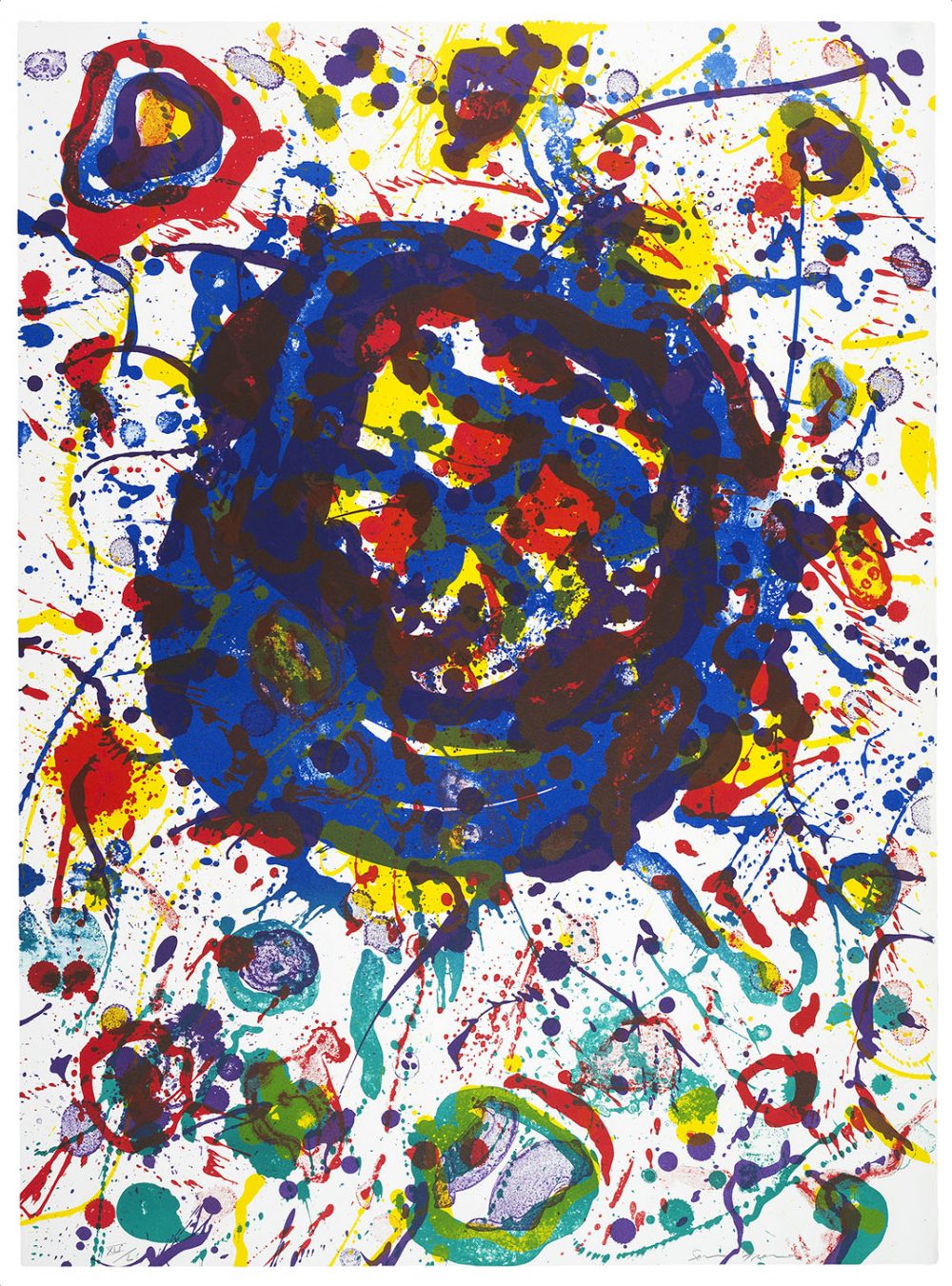
Sam Francis
Poèmes dans le Ciel (Poems in the Sky)
17th January - 21st February 2022
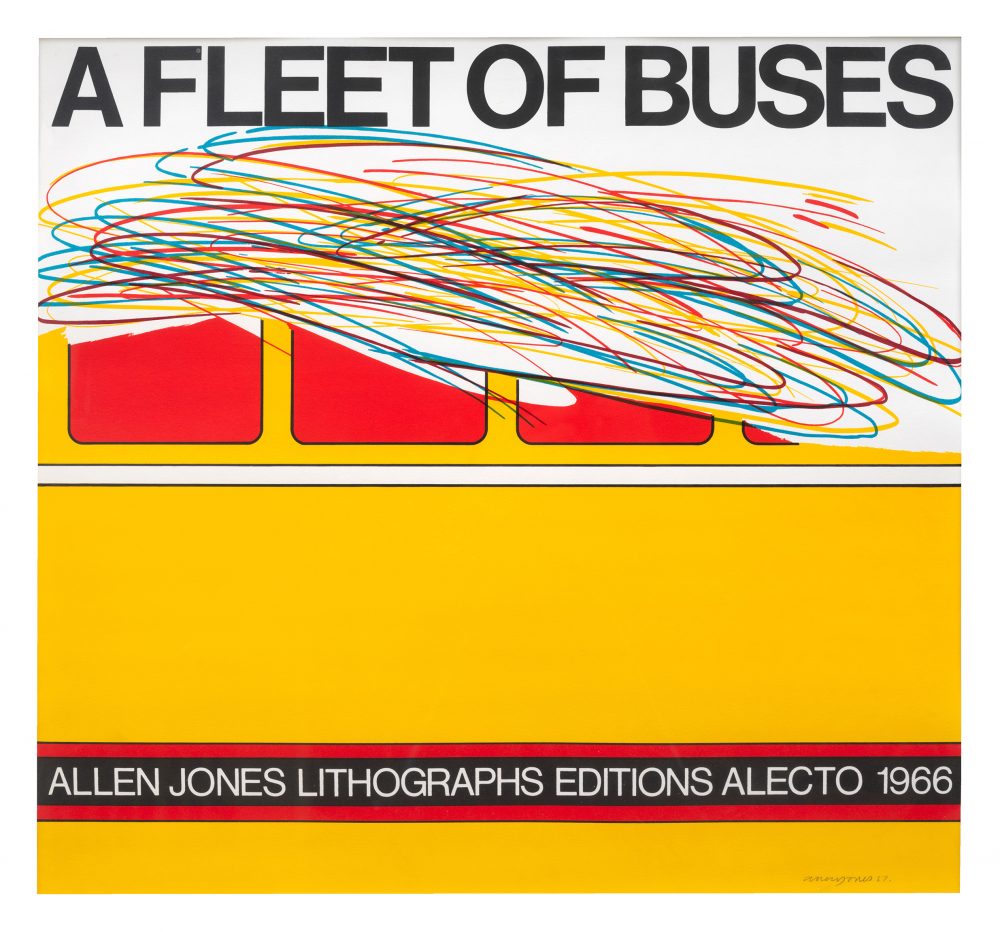
Allen Jones
A Fleet of Buses
1st November - 26th November
Online only
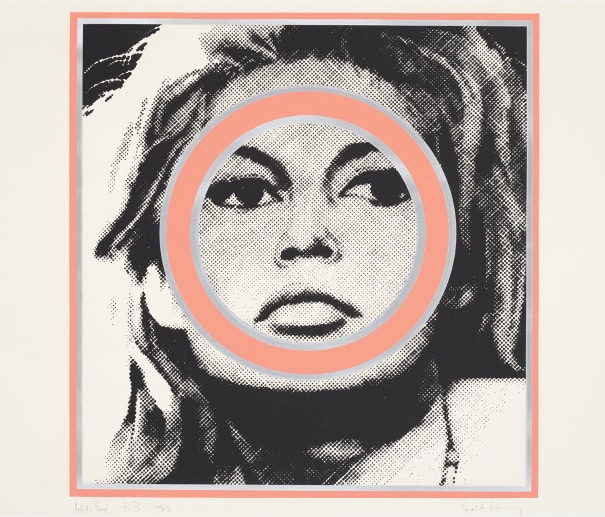
Pop Art in Print
2 - 30th August 2021
Online Exhibition
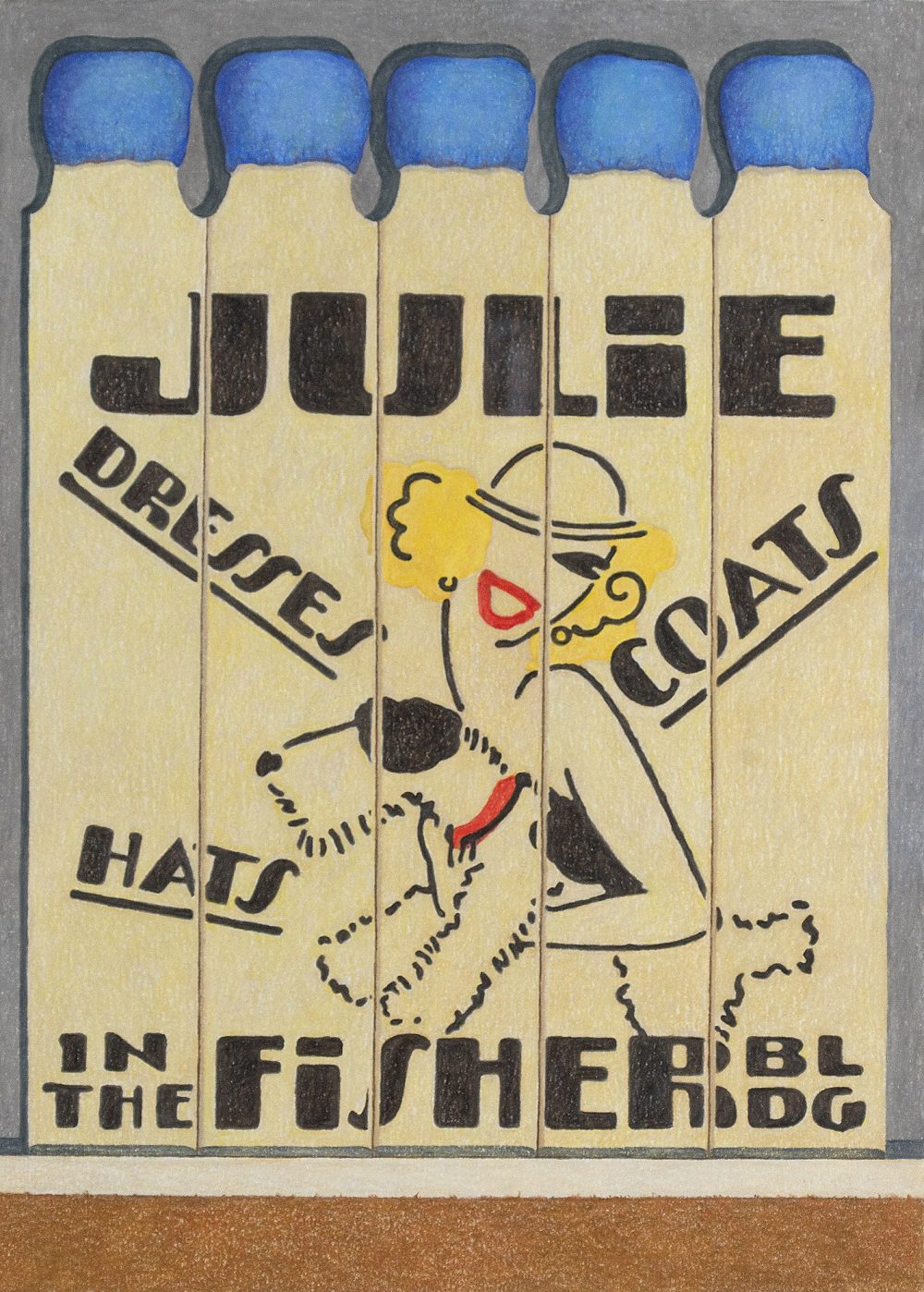
Aaron Kasmin
Always a Show
16th September - 28th October 2021
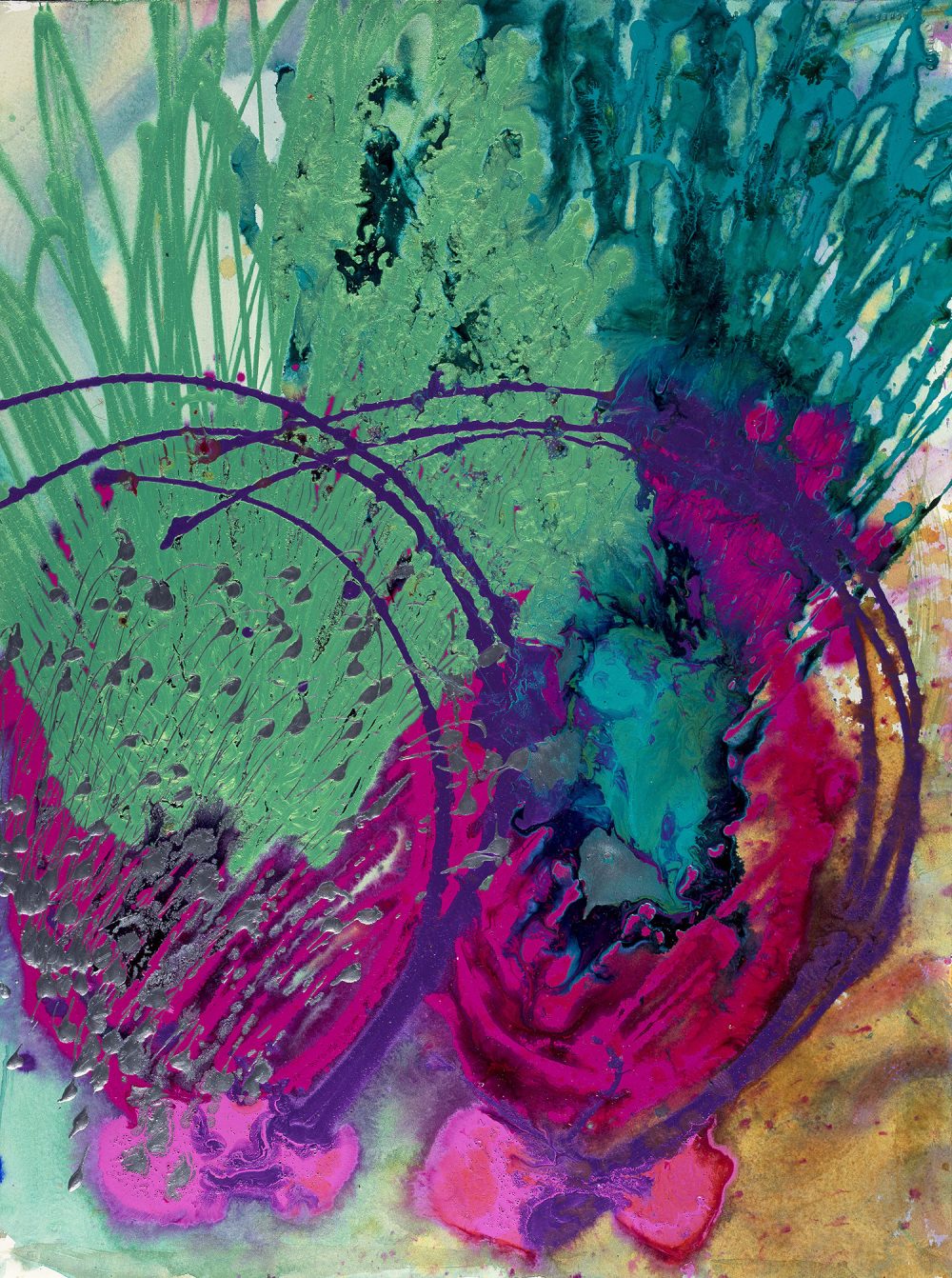
Chihuly
22nd July - 5th September 2021
Online Only
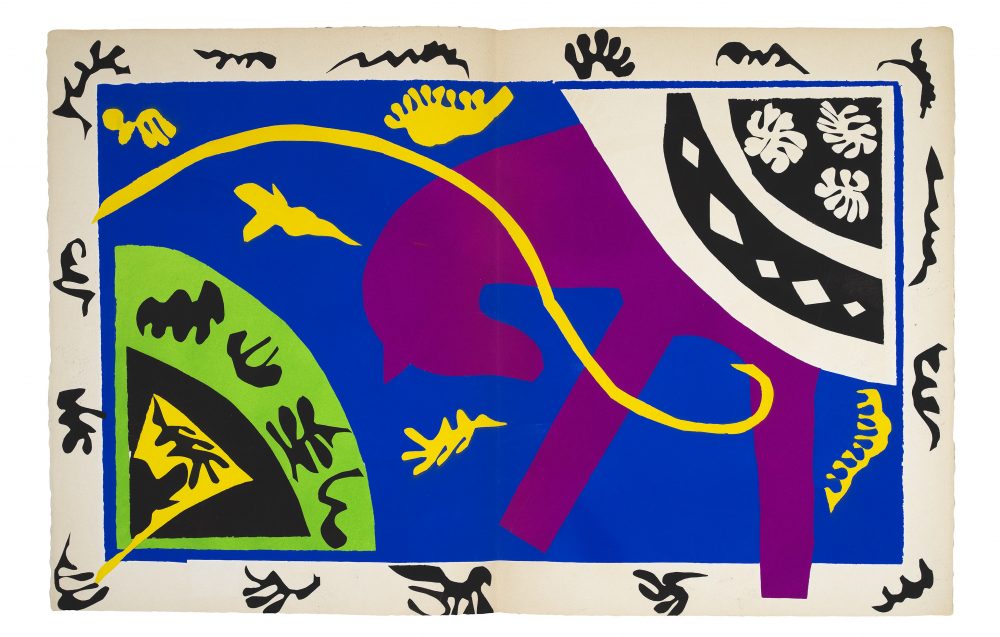
Henri Matisse
Jazz
20th May - 13th June 2021
Online only
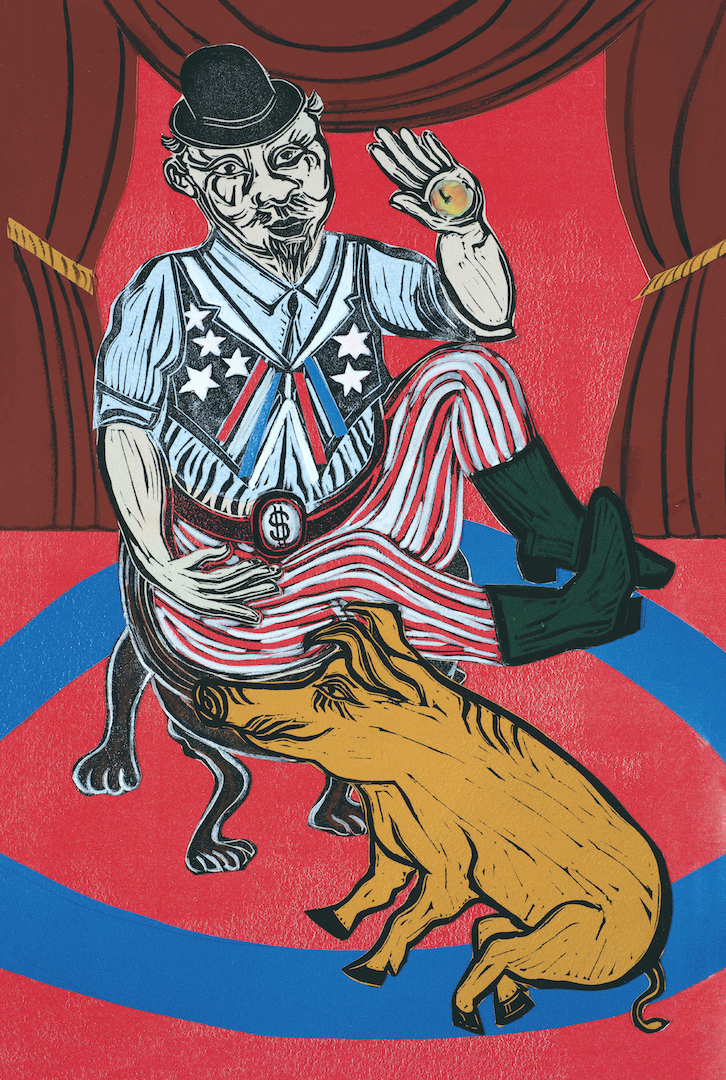
Eileen Cooper
Nights at the Circus
4th March - 14th May 2021
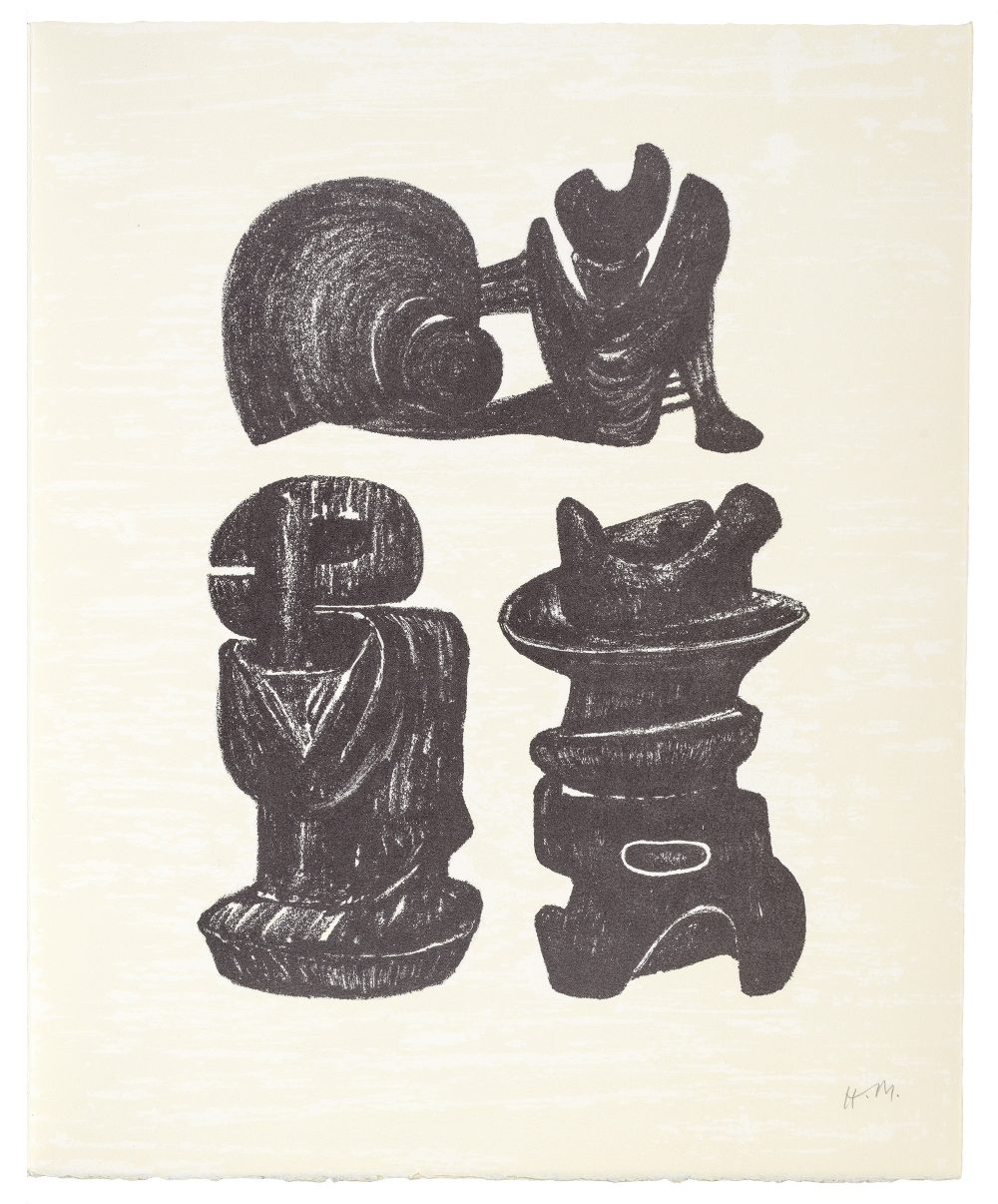
Henry Moore
The Art of Poetry
26th January - 26th February 2021
Online Only

Curated highlights from Emily Tobin
Ring out, wild bells
10th December 2020 - 2nd January 2021
Online only
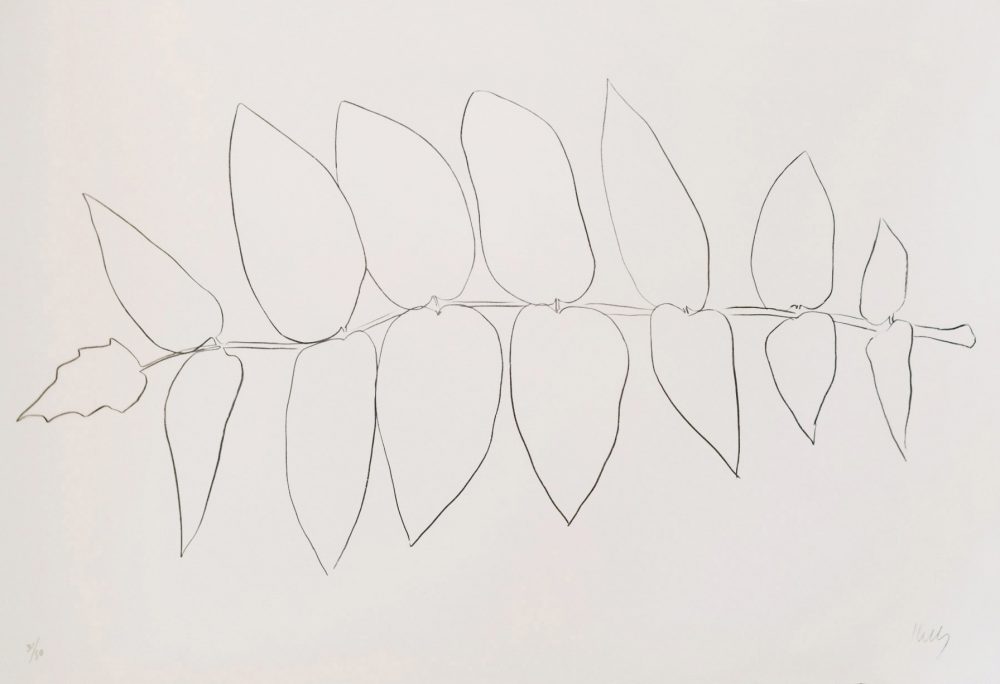
Ellsworth Kelly
Back to Nature
27th November - 20th December 2020
Online Exhibition
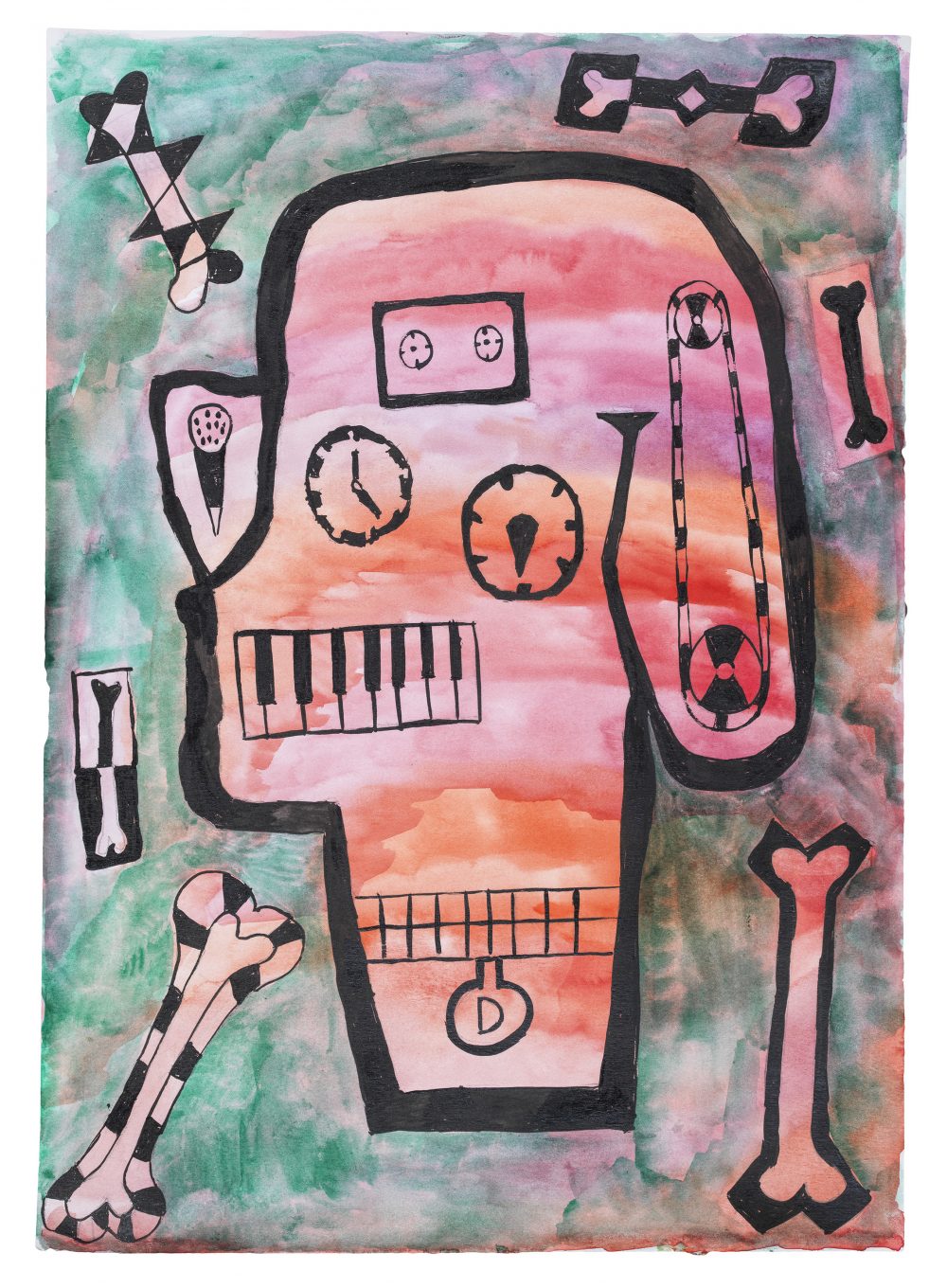
Declan Jenkins
Cinema of lava, cinema of mercury
12th November - 13th December 2020
Online Exhibition with Highlights at the Gallery
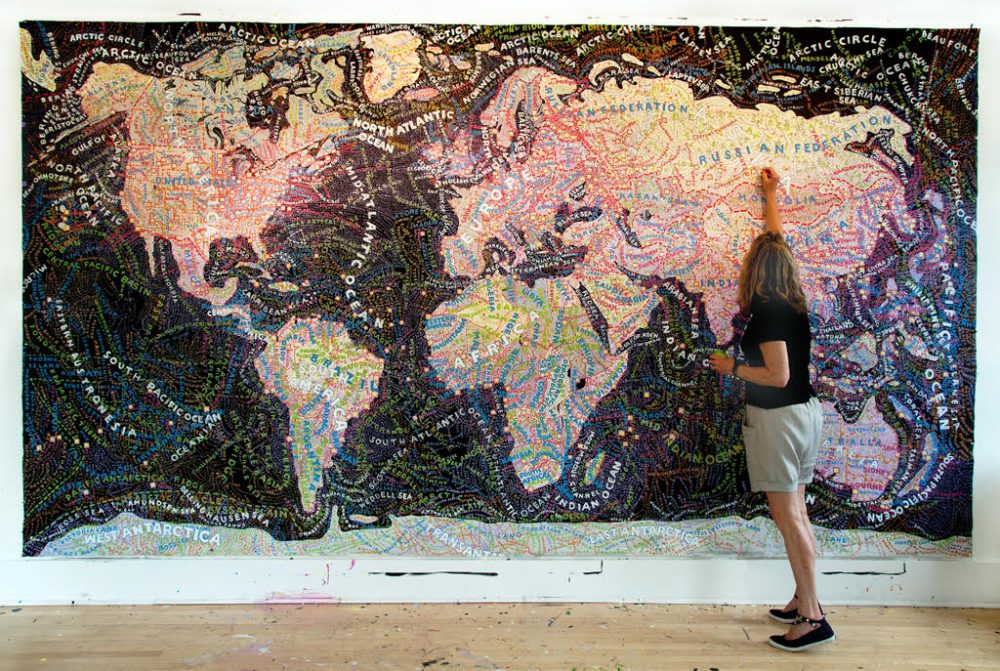
Paula Scher
All Over the Map
9th October - 8th November 2020
Online Exhibition

Howard Hodgkin
Colour Poems
28th August - 30th September 2020
Online only
